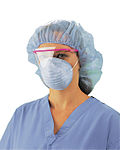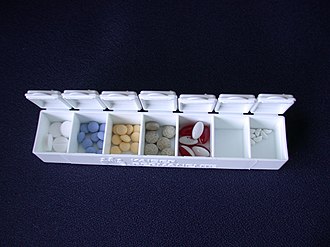Difference between revisions of "AY Honors/Home Nursing/Answer Key/es"
(Created page with "</noinclude><noinclude>") |
(Created page with "</noinclude><noinclude>") |
||
| Line 283: | Line 283: | ||
{{CloseReq}} <!-- 14d --> | {{CloseReq}} <!-- 14d --> | ||
{{ansreq|page={{#titleparts:{{PAGENAME}}|2|1}}|num=14e}} | {{ansreq|page={{#titleparts:{{PAGENAME}}|2|1}}|num=14e}} | ||
| − | <noinclude></noinclude> | + | <noinclude></noinclude><noinclude></noinclude> |
| − | |||
| − | <noinclude></noinclude> | ||
{{CloseReq}} <!-- 14e --> | {{CloseReq}} <!-- 14e --> | ||
{{ansreq|page={{#titleparts:{{PAGENAME}}|2|1}}|num=14f}} | {{ansreq|page={{#titleparts:{{PAGENAME}}|2|1}}|num=14f}} | ||
Revision as of 15:56, 22 February 2021
| Enfermería Casera | ||
|---|---|---|
| Asociación General
|
Destreza: 2 Año de introducción: 1938 |
|
Requisitos
|
La especialidad de Enfermería casera es un componente de la Maestría Desarrollo Espiritual y Ministerios. |
1
Para consejos e instrucciones, véase Primeros auxilios II.
2
2a
- Sopa clara o de crema
- Cualquier bebida que tiene los siguientes criterios
- Pudín
Para una comida ser clasificada como líquido, tendría que ser capaz de ser colada cuando se calienta. Por ejemplo, pudines de mandioca no calificarían, pero un batido sin pedazos de fruta u otros alimentos podría calificar.
2b
Una dieta blanda se recomienda en muchas situaciones, incluyendo algunos tipos de disfagia (dificultad para tragar), cirugía que involucran la mandíbula, la boca o el tracto gastrointestinal, y el dolor de aparatos dentales recién ajustados.
Una dieta blanda puede incluir muchos alimentos en puré, cubiertos o colocados con salsas o en salsa, o colocados en sopas, guisos, o curry.
2c
Esta dieta es culturalmente diversa e incluye lo siguiente:
- La comida que es fácil de digerir
- No picante
2d
Una dieta completa también se refiere a veces como la dieta general. Incluye todos los alimentos y las bebidas.
3
4
5
Personal protective equipment
Personal protective equipment (PPE) is specialized clothing or equipment worn by a worker for protection against a hazard. The hazard in a health care setting is exposure to blood, saliva, or other bodily fluids or aerosols that may carry infectious materials such as Hepatitis C, HIV, or other blood borne or bodily fluid pathogen. PPE prevents contact with a potentially infectious material by creating a physical barrier between the potential infectious material and the healthcare worker.
6
7
8
Hands should be washed after contact with any patient, and especially before contact is made with another patient.
9
10
Eating is a basic function of life, and people who are unable to perform this task may feel they have lost their dignity. Therefore, a patient should only be fed if they are unable to feed themselves. It is never appropriate to feed a patient because it is faster than allowing them to do it themselves.
11
Administering Medicines
Children do not usually take pills or capsules until they are older. Instead, they should be given liquid medicines. Be careful not to give your child medicine unnecessarily. Just because a child is miserable does not mean that she should be given a drug. Consider this carefully before medicating a child.
12
Fomentations
Fomentations are given by alternating hot and hold. Compressions can be either hot or cold, but no alternation takes place.
- Administration
A thick cotton cloth (such as a diaper or a dish towel) is immersed in 4 liters of hot water (the water may be mixed with a decoction). The cloth is then wrung out, and the temperature tested by applying it to the inside of the therapist's arm. If it is too hot, it can be fanned in the air, but it should not be used if it is scalding hot. It should, however, be as hot as the patient can stand. The hot cloth is applied to the effected area and then wrapped with dry cloths so that the heat is retained. The hot compress is them removed, and the area is quickly sponged down with a cold, wet cloth. Then the heat is reapplied as before. This is continued for up to 60 minutes.
- Conditions for Use
Fomentations can increase circulation, aid in relieving congestion, warm achy joints, and draw abscesses.
Foot baths
- Administration
A small tub (about 8 liters) is filled with hot water. Epsom salt may be dissolved in the water, but this is not strictly necessary. Test the water temperature before taking it to the patient. It should not scald. The basin is placed on the floor at the feet of the seated patient. The patient's bare feet are then placed in the water and allowed to soak for up to an hour. If the water cools, it should be changed. The patient's feet are then towel dried.
- Conditions for use
Foot baths may be given to relieve foot pain. This treatment is good for arthritis. Epsom salt, when used through soaking, can soothe muscle pains and help improve rough patches in the skin.
13
14
14a
14b
14c
14d
14e
14f
What can one say. We need air. Find the best air you can breathe. Do not smoke tobacco (or anything else), and avoid second-hand smoke.
14g
Rest allows the body to renew itself. Rest is important for health.
14h
Trust in God to lead you to the right choices.
Referencias
- Pages with broken file links
- Categoría: Tiene imagen de insignia
- Adventist Youth Honors Answer Book/Honors/es
- Adventist Youth Honors Answer Book/es
- Adventist Youth Honors Answer Book/Skill Level 2/es
- Categoría: Libro de respuestas de especialidades JA/Especialidades introducidas en 1938
- Adventist Youth Honors Answer Book/General Conference/es
- Adventist Youth Honors Answer Book/Unknown/es
- Adventist Youth Honors Answer Book/Unknown/Primary/es
- Adventist Youth Honors Answer Book/Stage 0/es
- Categoría:Libro de Respuestas de Especialidades JA/Maestría de Desarrollo Espiritual y Ministerios/Ministerios
- AY Honors/Prerequisite/First Aid, Standard/es
- AY Honors/See Also/First Aid, Standard/es


